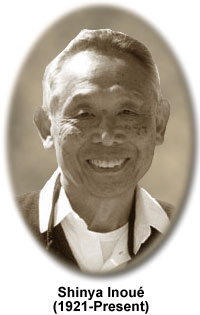Shinya Inoué
(1921-Present)

Shinya Inoué is a microscopist, cell biologist, and educator who has been described as the grandfather of modern light microscopy. He was born in London, England on January 5, 1921 and moved to the United States in 1948. Having already completed his undergraduate studies at Tokyo University, Inoué attended Princeton for both his master's and doctorate education. He has since been awarded honorary degrees from Dartmouth College and the University of Pennsylvania.
Inoué has made numerous scientific contributions in the fields of cell biology and microscopy. In the early 1950s, he helped develop the polarized light microscopy techniques that allow the fine details of cells to be observed without destroying them. The advances enabled Inoué to prove the existence of the spindle fibers that move chromosomes during mitosis, as well as offer an explanation of their transient nature. For more than fifty years prior to his work, scientists greatly debated the reality of the spindle fibers.
The pioneering microscopist also influenced the study of cell dynamics during the 1980s through his developments in video-enhanced contrast microscopy (VEC), which is a modification of the traditional form of differential interference contrast (DIC) microscopy. Inoué developed the method in parallel with Robert and Nina Allen and described his work at the same meeting of the American Society for Cell Biology as his fellow scientists. His seminal work, Video Microscopy, was published in 1986, and a second revised and updated edition, co-authored with Kenneth Spring, followed in 1997. The book is a cornerstone of microscopical knowledge and is highly regarded throughout the scientific community.
Inoué is a member of, and has held various offices in, a number of scientific societies. He is a fellow of the American Academy of Arts and Sciences, as well as the Royal Microscopical Society. In 1992, he received the E. B. Wilson award from the American Society of Cell Biology. Three years later he was given the Distinguished Scientist Award by the Microscopy Society of America and then accepted the Ernst Abbe award from the New York Microscopical Society in 1997.
Throughout his illustrious career, Inoué has held numerous academic posts and has acted as a consultant for a wide variety of companies and organizations. Some of the institutions where he has been employed include Tokyo Metropolitan University, University of Rochester, Dartmouth Medical School, and the University of Pennsylvania. Inoué is currently a distinguished scientist at the Marine Biology Laboratory in Woods Hole, Massachusetts where he has maintained a year-round laboratory since 1980.
